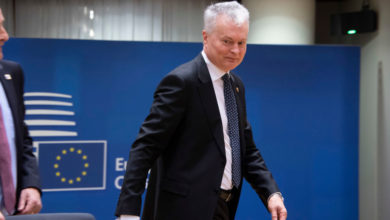What Elon Musk Plans to Do With Twitter After Buying It

ETwitter will be purchased by Musk. After months of publicly toying with the idea, the world’s richest man successfully negotiated a deal to buy the social media platform for $44 billion.
Musk released a Monday statement that included a list of platform goals. He has previously shared many of them to his Twitter audience of 83,000,000. “Free speech is the bedrock of a functioning democracy, and Twitter is the digital town square where matters vital to the future of humanity are debated,” he tweeted. “I also want to make Twitter better than ever by enhancing the product with new features, making the algorithms open source to increase trust, defeating the spam bots, and authenticating all humans.”
But are Musk’s goals actually feasible? Can he really transform Twitter into a less-moderated forum where free speech flourishes—and at the same time make it a service that generates more revenue from subscribers than advertisers? Sure, he’s the world’s wealthiest private citizen, but he’ll need Twitter to churn out income, if only to pay back the banks that loaned him $25 billion for the purchase. Here’s a look at Musk’s proposed changes, where Twitter stands on them currently, and what history–and experts–tell us about whether they might be successfully implemented.
READ MORE Elon Musk Reaches $44 Billon Deal for Twitter
‘Free speech absolutist’
Musk called himself a “free speech absolutist” in a March tweet. Last January, three days after President Trump received a permanent Twitter suspension for his “risk of further incitement of violence” following the Jan. 6 insurrection, Musk tweeted: “A lot of people are going to be super unhappy with West Coast high tech as the de facto arbiter of free speech.”
Musk’s hardline rhetoric about free speech flies in the face of Twitter’s recent evolution in this area. The site faced criticism in 2018 after a MIT study found that Twitter spread misinformation faster than real news. The company has increased its efforts to fight hate speech and improve user safety. Users can also flag fake information. The controversial Twitter account Libs of Tik Tok was twice suspended for “hateful conduct”—and last week, the company announced it would ban advertisements that challenge widely-accepted research on climate change.
But misinformation, propaganda and extremist views are still omnipresent on the site, especially surrounding Russia’s invasion of Ukraine. Musk said hate speech would not be allowed, however he still hasn’t been able to identify the gray areas. Furthermore, it is possible that Twitter could adopt more relaxed content moderation policies that lead to even more of the harmful behavior they have tried to eliminate for years.
And fewer guardrails around speech could be bad for Twitter’s bottom line: advertisers might be less likely to pay money for posts that might sit next to racism, bigotry or sexism.
Removal of ads
Twitter Headquarters in San Francisco (Calif.) on April 21st, 2022
David Paul Morris—Bloomberg/Getty Images
In a now-deleted Tweet, Musk argued for the removal of all ads from Twitter, writing, “The power of corporations to dictate policy is greatly enhanced if Twitter depends on advertising money to survive.”
Twitter’s financial survival is dependent almost entirely on advertising revenue. The company’s advertising revenue was $1.41 Billion, which is $1.57 Billion in total revenue for the quarter. The company launched Twitter Blue in November as a consumer subscription. It costs only $3 per month to access. “premium features.” But Chief Executive Parag Agrawal said in February that Blue is “not critical” to meeting its revenue projections, according to the Wall Street Journal.
Musk expressed his support for subscription models, however, he wants them to be less expensive than they are now. At a TED conference this month, he said that his interest in Twitter “is not a way to make money.” But he will need for the platform to continue to earn revenue, because he paid for more than half of it in financing from Morgan Stanley and other institutions. In order to service his debt, he will likely need to not just preserve Twitter’s ad revenue, but grow it.
Spam bots and authenticated humans
Musk called spam bots the “single most annoying problem” on Twitter. Bots, which often promote crypto-based scams these days, flood users’ feeds in an attempt to lure unsuspecting victims.
Twitter has an established process of weeding fake accounts. The company employs software to identify patterns in automation during registration. But botmakers are getting more slippery and sophisticated, allowing many to pass through Twitter’s censors undetected. Meanwhile, it’s much harder to sniff out manual fakes, in which real people create fake accounts to spread disinformation or defraud people. For over a year, a 21-year old impersonated Trump relatives on Twitter, and even tricked the President.
READ MORE Elon Musk—2021 Person of the Year
At the moment, Musk seems to believe that the best solution to the bots problem is to authenticate “all real humans,” or to have accounts overtly linked to other personal identifiers, whether it be a phone number, an email address or a photo. This idea is resented by many Twitter users, who love the app for its pseudonymity. “I would rather have spam bots than have to “authenticate” my human identity. I’ve made it this far without ever associating my government name with my extracurricular activities,” wrote one userMusk’s request.
“How can we ensure the people from at-risk regions who have to be under pseudonyms to enjoy the freedom to express the truth while authenticating they’re real humans without blowing their cover?,” the engineer Jane Manchun Wong wrote.Some others were concerned that the detailed user list, even though kept by Twitter internally, could be subject to hacks or seizure from government or other malicious actors.
Michael Saylor is the CEO of MicroStrategy business intelligence company MicroStrategy. He responded last week to Musk by offering his suggestion: users should be required post “a one-time security deposit”If they’re reported as acting with malice, they can be subject to forfeiture. However, this could result in collective bullying where a group of people with a vendetta can mass-report an individual to have them verified and their deposit taken out.
Open-source algorithms
Social media users see complex algorithms. Many of these components are closely protected secrets at Big Tech. Musk wants Twitter to open-source its algorithms—i.e., to publicly share the decision-making behind what tweets get shown to users. If someone’s tweets are “emphasized or de-emphasized, that action should remain apparent,” he argued at the TED conference. He is generally supported by many, particularly in light of the 2021 Facebook paper, which highlighted how flawed algorithms can lead to disastrous results.
However, several experts claim that it is much more complex than Musk believes. “The algorithm is just the tip of the iceberg.…The rest of the iceberg is all of this data that Twitter has,” Robin Burke, a professor of information science at University of Colorado at Boulder, told the Washington PostThis month. Even if the sprawling computer code was released to the public, Burke argues, much of it would be completely illegible to most viewers—and would be especially useless without the inserted data, which contains plenty of private and personal information.
A edit button
Musk is the best polled his followers on April 4 as to whether they wanted Twitter to implement an Edit button, they responded resoundingly: 73% of 4.4 million votes were “yes.” Calls for an Edit button have long been omnipresentReddit, Facebook and Twitter have Edit functions that work well for users.
While an edit button allows users to correct typos, it could also allow bad actors to modify the record of public conversations. To gain likes or retweets, trolls can publish an agreed upon statement to get a lot of attention. change it to something heinousAfter the fact. Hackers may gain access to corporate or government accounts, and modify information. Ben Sangster was a former Twitter software engineering engineer. wrote that while he was part of an internal effort to create an Edit button in 2015, his team “concluded that the potential for abuse was too high to move forward.”
There’s also a smaller technical issue: Twitter allows third-party apps and developers, including widely-used ones like TweetDeck, to download tweets in real time. Once a tweet is downloaded by a platform like TweetDeck, there’s no way for Twitter to recall or edit it, Lewis Mitchell, a data science professor at the University of Adelaide, wrote in a recent article.
Twitter has its own Twitter account announcedAlthough it has been working on an Edit option, Musk’s team is keeping the details a secret. One user who responded to Musk’s poll suggested that the Edit button should only be available for a few minutes after someone publishes, and that the original Tweet remain available to the public. Musk called the proposal “reasonable.”
While Musk faces plenty of challenges, he’s overcome daunting obstacles before, whether at SpaceX or Tesla. He is a remarkable man. acknowledged on Twitter that he is ready to hear from his critics, no matter how loud they might be: “I hope that even my worst critics remain on Twitter, because that is what free speech means.”
Here are more must-read stories from TIME





